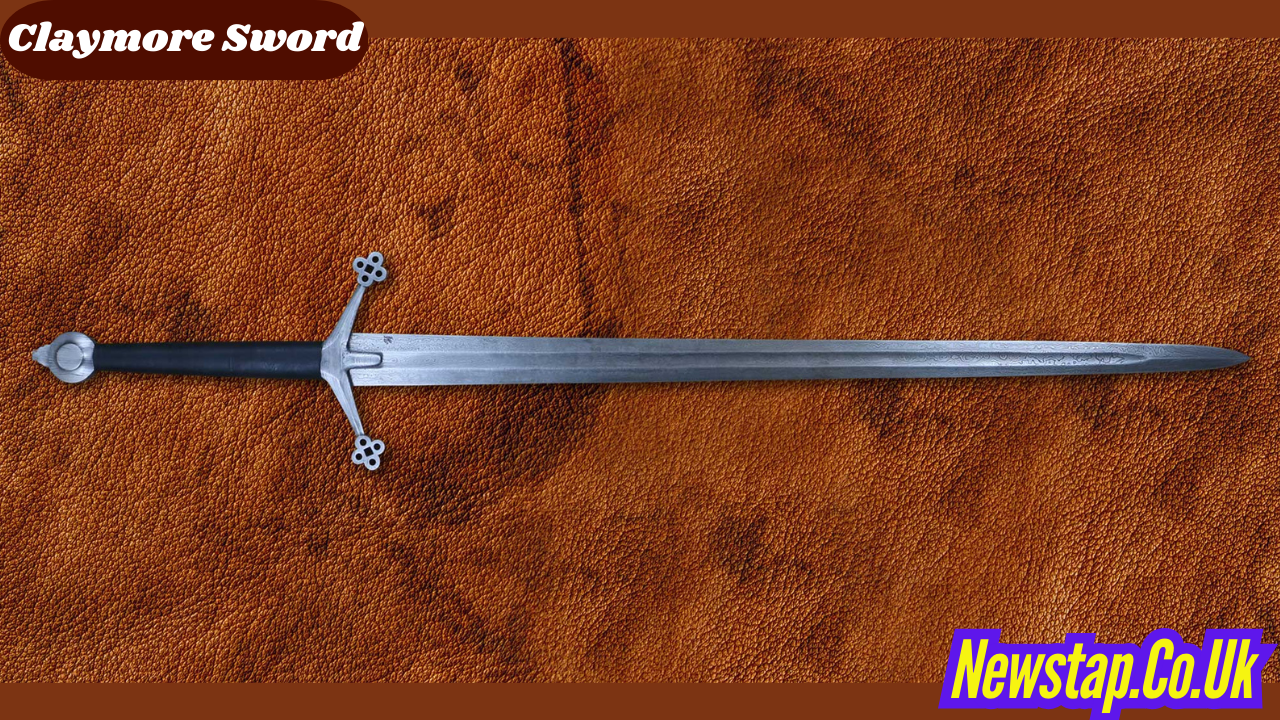The claymore sword stands as one of the most iconic weapons in history, symbolizing the fierce spirit of the warriors who wielded it. Known for its impressive size and formidable design, the claymore sword has captured the imagination of history enthusiasts and fantasy lovers alike. This article delves into the history, design, and cultural significance of the claymore sword while uncovering its enduring appeal.
Origins of the Claymore Sword
The claymore sword is rooted in Scottish history, dating back to the late medieval and early Renaissance periods. The name “claymore” is derived from the Gaelic term “claidheamh-mòr,” meaning “great sword.” These massive weapons were predominantly used by Scottish Highlanders, who valued them for their reach and sheer power in battle. Claymore swords became especially prominent during the 15th and 16th centuries, playing a key role in clan warfare and military skirmishes.
The claymore sword is often associated with the Wars of Scottish Independence, where iconic figures like William Wallace and Robert the Bruce led their forces against English domination. Though not all swords of this era were true claymores, the weapon’s image remains closely tied to Scotland’s fight for freedom.
Design and Characteristics of the Claymore Sword
One of the most distinguishing features of the claymore sword is its size. Typically, a claymore sword measured between 55 to 70 inches in length, with a blade that could range from 42 to 50 inches. The large hilt allowed for a two-handed grip, giving the wielder greater control and force during combat.
The claymore sword’s crossguard is another notable feature. Often adorned with quillons angled downward and ending in quatrefoil designs, this crossguard not only provided hand protection but also added an aesthetic elegance. The broad, double-edged blade was designed to deliver devastating slashes and thrusts, making it effective against both armored and unarmored opponents.
Despite its size, the claymore sword was surprisingly balanced, allowing skilled warriors to wield it with relative ease. Its design made it particularly effective in open-field battles, where reach and momentum could overwhelm opponents.
The Role of the Claymore Sword in Battle
The claymore sword was a weapon of choice for Scottish warriors during the height of its use. Its long reach gave Highlanders a significant advantage in open combat, allowing them to strike enemies from a distance. The two-handed grip provided superior leverage, making it possible to break through shields and armor.
In battles, claymore swords were often used by frontline warriors, who charged into enemy lines with unmatched ferocity. The sight of a claymore-wielding Highlander was enough to strike fear into opponents, as the weapon’s sheer size and the skill required to wield it symbolized strength and determination.
However, the claymore sword was not without its limitations. Its large size and weight made it less practical in tight or confined spaces, where smaller weapons were more effective. Despite this, the claymore’s dominance in open-field warfare solidified its place in history.
Cultural Significance of the Claymore Sword
Beyond its practical use in battle, the claymore sword holds a deep cultural significance in Scotland. It represents the bravery, independence, and resilience of the Scottish people. The weapon is often featured in literature, art, and folklore, serving as a symbol of the country’s rich heritage and warrior spirit.
In modern times, the claymore sword continues to be celebrated as a symbol of Scottish identity. It is displayed in museums, carried in parades, and even used in reenactments of historical battles. The claymore has also found a place in popular culture, appearing in movies, television shows, and video games, where it embodies the strength and valor of its historical roots.
The Evolution of the Claymore Sword
As warfare evolved, so too did the design and use of swords. By the late 16th century, the traditional two-handed claymore sword began to fall out of favor, replaced by smaller, more versatile weapons like the basket-hilted broadsword. Despite this shift, the legacy of the claymore sword endured.
The basket-hilted broadsword, often referred to as a “claymore” in later periods, featured a single-handed grip and a protective basket guard. While distinct from the earlier two-handed claymore, this weapon carried on the name and became an important part of Scottish military history.
The Claymore Sword in Modern Times
Today, the claymore sword remains a popular subject of fascination. Collectors and historians prize authentic claymore swords as valuable artifacts, while replica versions are sought after by enthusiasts and reenactors. The weapon’s iconic design also makes it a favorite among fantasy creators, appearing in countless books, games, and films.
The claymore sword’s enduring legacy is a testament to its historical importance and the cultural pride it inspires. It stands as a symbol of strength, bravery, and the indomitable spirit of the Scottish people.
Conclusion
The claymore sword is far more than just a weapon; it is a piece of history that tells the story of a nation’s struggles and triumphs. From its origins on the battlefields of medieval Scotland to its place in modern culture, the claymore sword continues to captivate and inspire. Its impressive design, rich history, and cultural significance ensure that it will remain a timeless symbol of power and heritage for generations to come.
Also Read: What Was the Language Spoken in Mesopotamia? A Deep Dive into Ancient Communication



